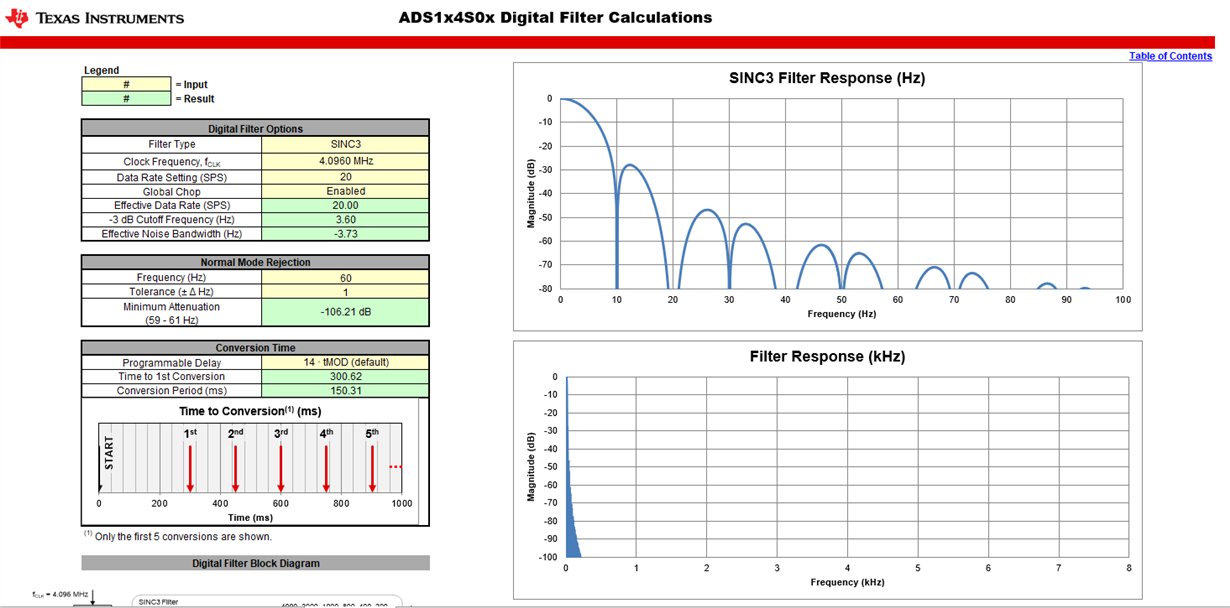Other Parts Discussed in Thread: ADS124S08
Hello guys,
One of my customers is trying to use ADS124S08 calculation tool because they are considering using ADS124S08
for their new products.
In the trying, they have a few questions as the follows.
Q1. They set Data Rate Setting to 20 SPS as the attached screen shot.
They thought that this meant one converted output data (24bit data) is generated per 50ms.
But the data in "Conversion Time" table at the same screen shot are showed as the following.
"Time to 1st Conversion" = 300.62ms, "Conversion Period" = 150.31ms,
They want to know why these data are not 50ms?
Q2. Is the internal converted data (the primary converted data) generated per 50ms but is the output data
delayed in the filter and the output data rate become lower than 20SPS like 6.7SPS?
Q3. If "Conversion Period = 150.31ms" is correct, is /DRDY signal output period 150.31ms and does it mean 6.7SPS?
Could you please give me your reply?
Your reply would be much appreciated.
Best regards,
Kazuya.


